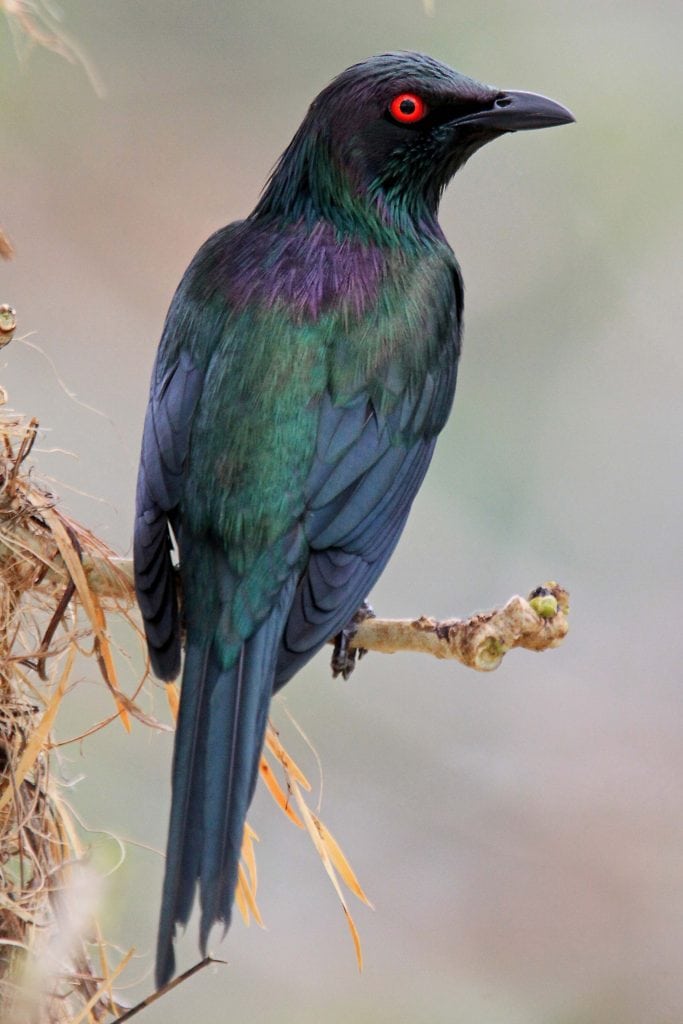These songbirds are adaptable to many habitats, including woodland, coastal wetlands, and rain forest. They are the only native starlings to Papua New Guinea and Australia’s nearby islands.
They cover a large area because of migrating during the breeding season. At the end of the dry season, they migrate as far north as Queensland for breeding season. These birds typically feast on fruit and insects in the wild.

These birds spend their days in large flocks consisting of thousands of individuals. They spend time in the trees feasting on fruit, nectar, and insects. As the sun sets, they prepare to roost overnight in trees that are close to one another. Before settling in, they gather and create a swirling display in the sky chattering away with one another.
Metallic starlings, being small birds, have a wide variety of predators including introduced foxes, larger birds of prey, and dingos. These gregarious birds practice safety in numbers by staying together in a large flock.















